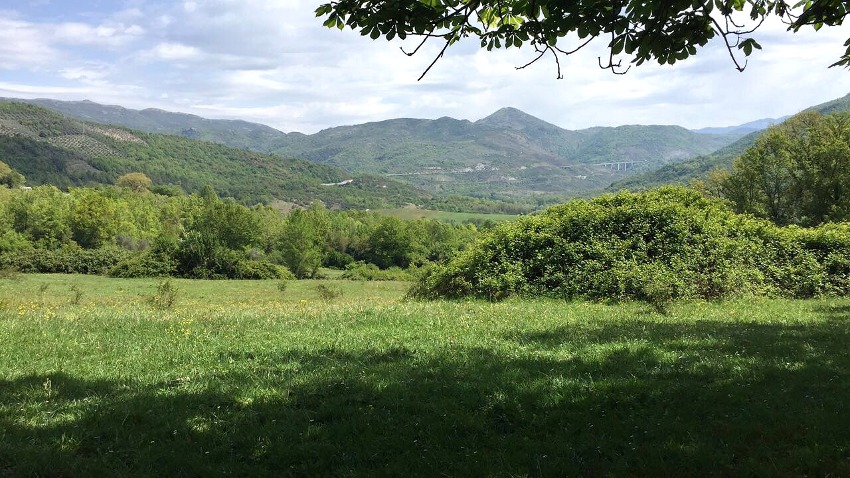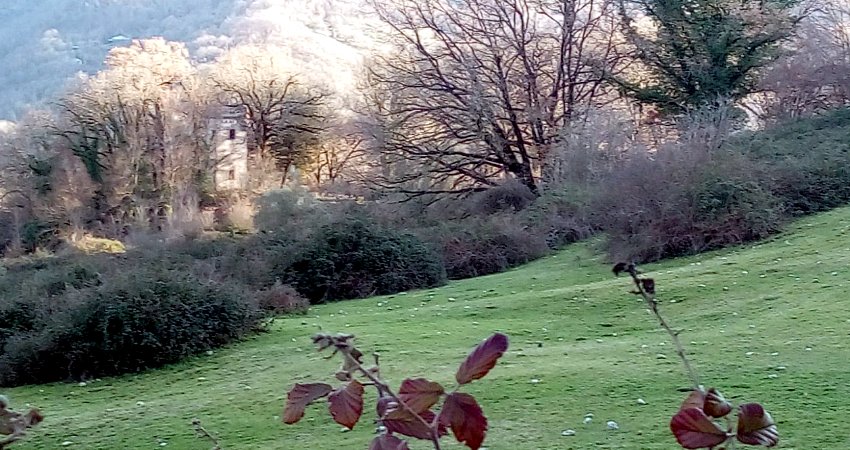Gardens of Horace
The Castle Riserva
Hackert's landscapes


This is part of the parkland around the castle immortalised by the German Painter Jacob Phillip Hackert in the 18th Century as the ideal view.

In the 19th Century Alessandro del Gallo and his wife, Julie Bonaparte, grandniece of Napoleon, bordered this parkland in order to have a naturally landscaped or romantic garden in the English style where they could walk inside an ideal view.
Oaks, holms, cypresses and horse chestnuts were planted, enclosing part of an Ancient Roman aqueduct and a Medieval tower used in the 19th century for breeding doves. Their idea was to create a naturally landscaped garden by leaving the parkland just as it was without having to carry out any major earthmoving. Capability Brown's gardens, which set the fashion of landscaped or romantic gardens in England and Europe, were object of a consistent earthmoving as they were often contrived to look natural.
The Romantic landscape movement in Europe, originally inspired by the landscape painters Lorrain and Poussin in the 17th Century, was in turn inspired by the Roman countryside famous for the poetry of Horace and Virgil. This meant that the landscape gardens in Europe were often modelled and dug out to obtain the gentle slope effect typical of the Roman countryside, Hackert changed the conception of the ideal landscape to a different area of the Roman countryside, this time in the views around where Horace had his summer villa. But the countryside around Mandela was already picturesque and was left as it was, considered to be an inspiring view.
«The country estate was famous for its picturesque landscape, wonderful gardens, extensive art collection, and large library, it was a center of social life in the Delaware Valley... He (Joseph Bonaparte) laid out one of the finest picturesque gardens in North America.»
(Richard Veit, Bonaparte Estate at Point Breeze).
Another important fact concerning the naturally landscaped garden in Mandela was the absence of water; water is the condition for survival in Mediterranean gardens, while gardens in Northern Europe benefit from the rain.
The grounds of the old military outpost of Mandela were perched up on the hill controlling access to Rome since Ancient Roman times, so the Castle could not benefit from use of the water of the Aniene River passing below, which still so abundantly supplies the fountains of the Villa d’Este, the cascate of Tivoli, and Hadrian’s Villa.
The grounds in Mandela were intentionally left as cultivated fields and pastures in order not to have the need for irrigation, and this is why it has survived.